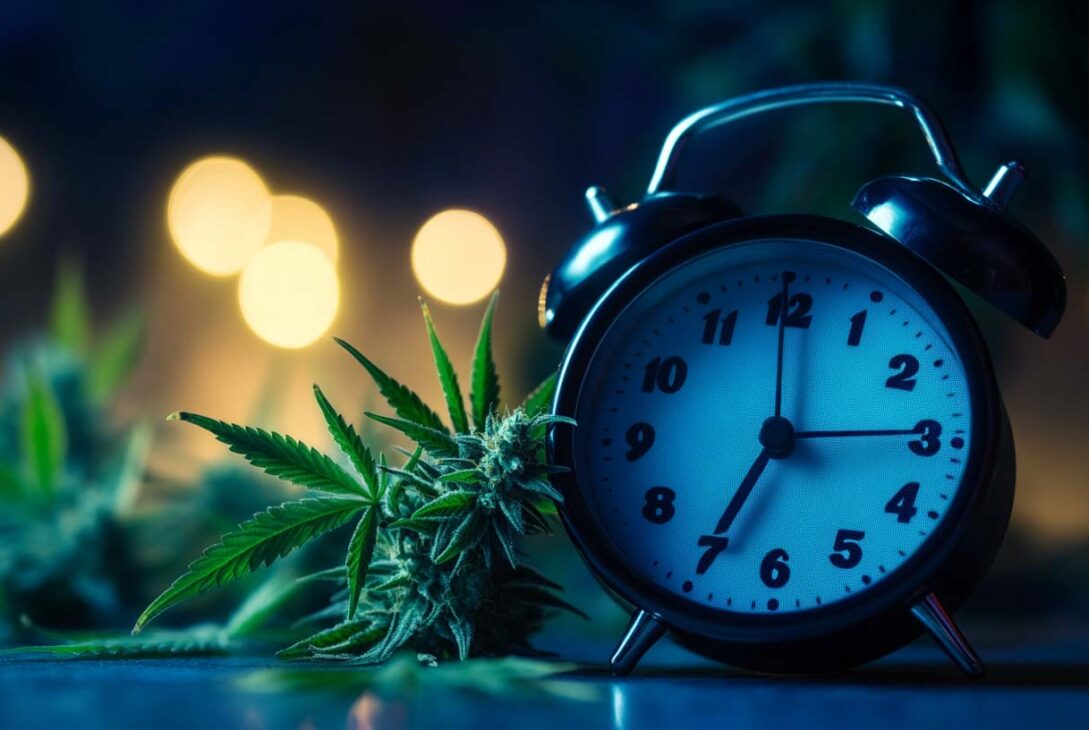Introduction to Cannabinoid Influence on Circadian Rhythms
In the intricate web of human physiology, circadian rhythms serve as an essential framework, influencing our sleep-wake cycles and numerous biological processes. Among the myriad compounds that interact with these rhythms, cannabinoids—especially those derived from the hemp plant—have emerged as interesting players, sparking a growing interest in their potential effects on our internal clocks. This article delves into the nuanced relationship between cannabinoids, circadian rhythms, and the sleep-wake cycle, shedding light on the benefits and risks associated with their use.
Understanding Circadian Rhythms
Circadian rhythms are natural, roughly 24-hour cycles that play a vital role in regulating several physiological processes, including our sleep-wake patterns, hormones, and even metabolism. The suprachiasmatic nucleus (SCN), located in the anterior hypothalamus of the brain, functions as our body’s internal clock. This tiny cluster of neurons synchronizes our circadian rhythms with external environmental cues, such as light, activity, and meal times.
Disruptions to these rhythms can lead to various health issues, ranging from sleep disorders to metabolic syndrome. So, how do cannabinoids fit into this delicate balance?
The Role of Melatonin in Circadian Rhythms
One of the key players in regulating our sleep-wake cycles is melatonin. Produced in the pineal gland from serotonin, melatonin is often referred to as the “sleep hormone.” Its secretion is closely tied to light exposure: as darkness falls and natural light decreases, melatonin levels rise, signaling the body that it’s time to wind down. This increase prompts several physiological changes, including a drop in core body temperature, which all work harmoniously to encourage sleep.
When looking at the intersection of cannabinoids and sleep, understanding how they interact with melatonin is crucial.
Cannabinoids and Circadian Rhythms
Cannabinoids, such as THC (tetrahydrocannabinol) and CBD (cannabidiol), engage with the body’s endocannabinoid system (ECS)—a complex network involved in many bodily functions, including sleep regulation. The way these cannabinoids interact with the ECS can influence our circadian rhythms in both beneficial and detrimental ways.
Short-Term Effects
In the short term, cannabinoids appear to enhance sleep quality. Research indicates that cannabis consumption can:
- Decrease the time it takes to fall asleep (sleep latency).
- Reduce wakefulness after sleep onset.
- Increase slow-wave sleep (SWS)—the deep sleep phase that is critically restorative.
This could be especially pivotal for individuals grappling with chronic issues like pain, PTSD, or anxiety, where sleep disturbances are common. Some anecdotal evidence supports these findings, with many users reporting improved sleep patterns after cannabinoid use.
Long-Term Effects
Contrastingly, long-term cannabinoid use can lead to adverse consequences for sleep architecture. Chronic consumers may face:
- Decreased amounts of both SWS and REM (rapid eye movement) sleep.
- Increased occurrences of sleep disturbances.
- Longer waits for the initial REM sleep episode.
Such findings suggest that while cannabinoids may serve as effective short-term solutions for sleep, their prolonged use may disrupt the intricate balance of our natural sleep-wake cycles.
Cannabinoids and Melatonin
The relationship between cannabinoids and melatonin is layered and complex. Some studies indicate that THC can interfere with the SCN’s ability to synchronize with light cues, which may impact natural melatonin release. While further research is necessary, there’s evidence to suggest that cannabinoids also work indirectly to promote sleep by alleviating disruptive symptoms like pain or anxiety, which can otherwise hinder melatonin production.
Cannabinoids and Insomnia
For those battling insomnia, cannabinoids seem to offer a ray of hope. CBD, in particular, has received attention for its potential to enhance sleep outcomes. A randomized controlled pilot trial found that nightly supplementation of 150 mg of CBD improved participants’ well-being and sleep efficiency. While it did not significantly lessen insomnia severity, it provided promising results for those looking for a natural sleep aid.
The Entourage Effect and Cannabinoid Ratios
The effects of cannabinoids don’t exist in a vacuum; they are influenced by the entourage effect, where various compounds found in the cannabis plant interact synergistically. The THC to CBD ratio is pivotal in this regard. THC tends to be sedative, promoting sleep, while CBD can encourage alertness at lower doses and relaxation at higher doses. Striking the right balance could allow users to reap the sleep benefits of THC while minimizing any potential negative effects that could arise from its use.
Circadian Entrainment and Cannabinoids
Circadian entrainment describes how our internal clock aligns with external cues, such as light and darkness. Some studies propose that cannabinoids, particularly THC, may serve as zeitgebers—environmental signals that help recalibrate our internal rhythms. On the flip side, regular use can lead to desensitization of cannabinoid receptors, potentially disrupting this syncing process over time.
Conclusion and Actionable Tips
As you explore the relationship between cannabinoids and sleep, consider the following actionable points:
- Understand Your Unique Needs: Different symptoms require different approaches. If you struggle with chronic pain or anxiety, cannabinoids might provide the sleep benefits you seek.
- Mind Your Dosage and Timing: Pay attention to how much and when you take cannabinoids. Higher doses of CBD can promote sleepiness, while lower doses may induce alertness. Similarly, while THC can be sleep-inducing, higher concentrations could lead to overstimulation in some users.
- Consider Frequency of Use: To protect your sleep architecture, it may be wise to limit the frequency of cannabinoid use. Occasional use is typically less disruptive than daily consumption.
- Consult a Healthcare Professional: Before diving into cannabinoid use for sleep, consult a healthcare professional—especially if you’re managing other health conditions. They can offer personalized advice to navigate the complex landscape of cannabinoid therapy.
In essence, cannabinoids possess a multifaceted influence on circadian rhythms and sleep. They have the potential to enhance sleep quality, particularly for individuals with specific health challenges. However, long-term considerations and interactions with melatonin and sleep architecture warrant thoughtful reflection.
Through understanding these interactions, individuals can make more informed choices about their health and sleep quality, promoting a well-rounded approach for improved well-being.
Additional Resources
If you seek further information, consider exploring resources from sleep foundations, peer-reviewed studies on cannabinoids, or consulting healthcare professionals specializing in cannabinoid therapies.
Ultimately, the relationship between cannabinoids and sleep is a dynamic area of research, indicative of the need for ongoing exploration and understanding of these natural compounds. By carefully considering your approach to cannabinoids and their impact on your circadian rhythms, you can take proactive steps toward a well-rested future.





















